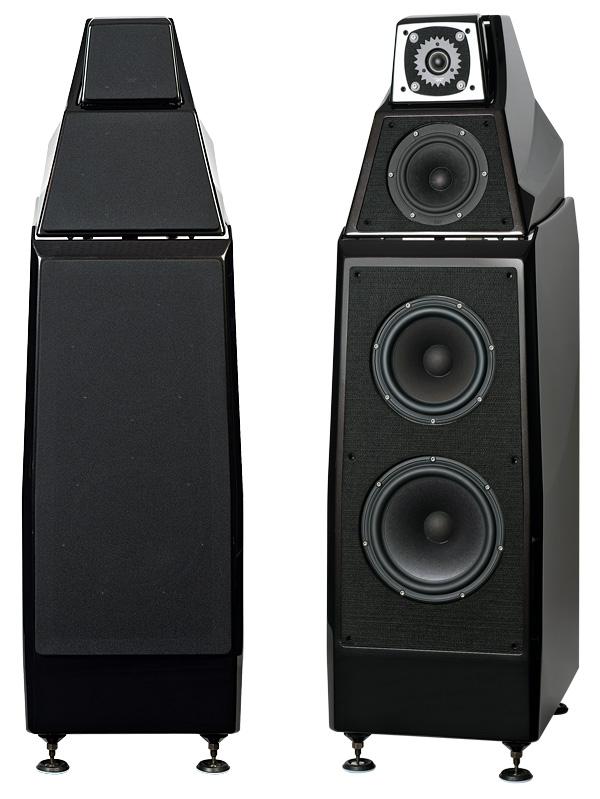Wilson Audio Alexia Series 2 loudspeaker

 Improved sensitivity and a deeper bass are just two features of the Master Chronosonic-inspired Alexia S2
Improved sensitivity and a deeper bass are just two features of the Master Chronosonic-inspired Alexia S2
During their time, Wilson's famous 'Watt Puppies' were upgraded on as many as seven occasions, until the Sasha W/P was born (now also in its Series 2 iteration). The Sasha was no longer a standalone monitor with a carrying handle and a matching subwoofer but a fully-fledged modular integrated loudspeaker system.
Legend has it that, on a trip to Vienna, David Wilson had an epiphany that was to prove a turning point in the brand's sound. The upper bass bravado, midrange jactance and treble alacrity which, by European standards, allegedly afflicted earlier generations of Watt Puppies, were all sensibly dealt with in the (then) revolutionary Sasha project.
The original Alexia drew on the Sasha [HFN Mar '13], taking the modular approach to time alignment used in the Alexandria and XLF to new levels. Now the time has come to improve the Alexia itself, taking it on to Series 2 status using the knowledge gained from the development of the WAMM Master Chronosonic [News, HFN Jan '17].
Pump Up The Volume
The first challenge for Daryl Wilson, who took over as company CEO in 2016 [see From Father to Son sidebar], was to increase the internal volume of the bass enclosure by 10% while ensuring it remained roughly the same size and retained the same footprint as the original. This was no mean task, but it has been achieved by building a six-sided cabinet from a mix of the company's X- and W-Material with a cut-out at the bottom for the crossover. This eliminates the need for a chamber through which the cable is routed and the variable-gauge Transparent Audio cabling now exits through gas-tight fitting holes.
The 200mm and 250mm paper pulp bass drivers are the same as those used in the original Alexia while the front baffle inherits its gentle slope from the Alexx for improved integration with the midrange. The final touch is the XLF-inspired removable window of clear glass at the rear of the cabinet, which reveals the speaker's tuning resistors.
Alphabet Soup
The rear chamber has also been banished from the midrange housing, increasing internal volume in this case by 26%. With both chambers removed it was now possible to centre the bass port, which was offset in the original speaker, and turn the two vertical midrange side vents into a single horizontal vent.
More internal space also means room for better bracing to improve rigidity and eliminate panel resonance. Again the enclosure is built from X- and W-Material, but the baffle has been fabricated from S-Material (Wilson Audio's cabinets are becoming an alphabet soup). What's more, the enclosure's side panels have their internal edges milled with an elaborate geometric pattern in a bid to dissipate rearward-reflected energy further.
The midrange cabinet proudly houses the same SB Acoustics cellulose/paper pulp double-magnet midrange driver seen on the original Alexia. Midrange time alignment is achieved by moving the module fore and aft, or by adjusting the height of the rear supporting spikes in order to tilt it to suit the seating height of the listener. This arrangement can be refined further by placing the rear spikes in a number of pre-set block steps. By rotating both the midrange and tweeter modules on the polar axis you can tune up polar dispersion too, thus widening the usable listening area. Think of it like eating your cake in the sweet spot and sharing it with your family and friends around you.
The tweeter enclosure has a fully redesigned chamber for better rear-wave diffraction and now sports the very same 25mm 'Mach 5 Convergent Synergy' silk dome tweeter developed for the company's WAMM. The position of the tweeter in relation to the midrange can also now be adjusted via a series of 'half foot' indentations, said to result in the best possible temporal accuracy.
![]() Highest Calibre
Highest Calibre
The speakers were set up in a large and well treated room and tuned by a local distributor. They were positioned some 3.5m metres apart and well away from side and back walls. Associated equipment was of the highest calibre: a dCS Vivaldi One media player was used for the replay of CDs and a Rossini DAC for hi-res files; amplification came courtesy of a Dan D'Agostino Momentum preamp [HFN Nov '13] and Progression mono amps [HFN Jun '17]; while all cabling was Transparent Audio Opus.
























































